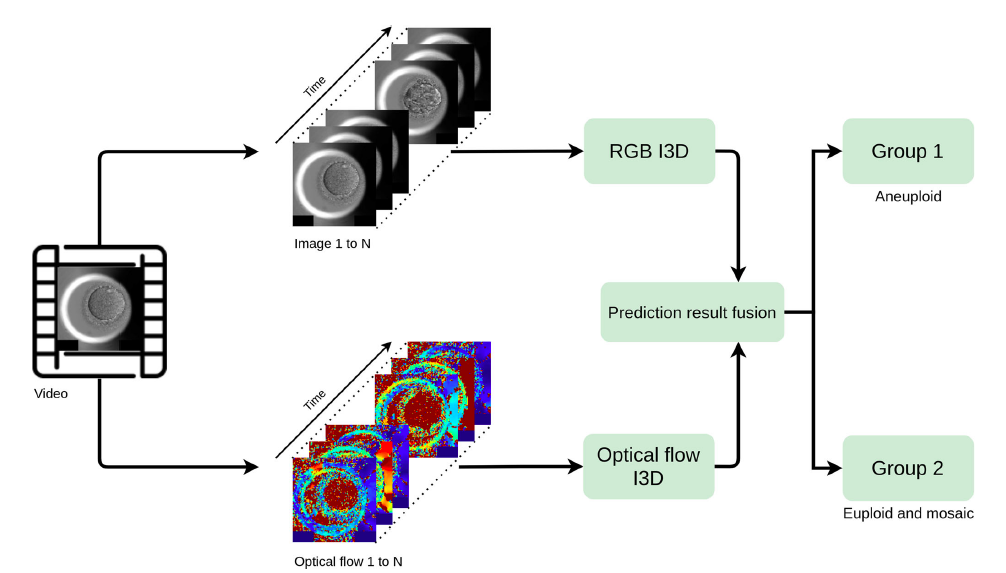2021.05.22
End-to-end deep learning for recognition of ploidy status using time-lapse videos

Journal of Assisted Reproduction and Genetics
Purpose
Our retrospective study is to investigate an end-to-end deep learning model in identifying ploidy status through raw time-lapse video.
Methods
By randomly dividing the dataset of time-lapse videos with known outcome of preimplantation genetic testing for aneuploidy (PGT-A), a deep learning model on raw videos was trained by the 80% dataset, and used to test the remaining 20%, by feeding time-lapse videos as input and the PGT-A prediction as output. The performance was measured by an average area under the curve (AUC) of the receiver operating characteristic curve.
Result(s)
With 690 sets of time-lapse video image, combined with PGT-A results, our deep learning model has achieved an AUC of 0.74 from the test dataset (138 videos), in discriminating between aneuploid embryos (group 1) and others (group 2, including euploid and mosaic embryos).
Conclusion
Our model demonstrated a proof of concept and potential in recognizing the ploidy status of tested embryos. A larger scale and further optimization on the exclusion criteria would be included in our future investigation, as well as prospective approach.
Authors
Chun-I Lee, Yan-Ru Su, Chien-Hong Chen, T. Arthur Chang, Esther En-Shu Kuo, Wei-Lin Zheng, Wen-Ting Hsieh, Chun-Chia Huang, Maw-Sheng Lee & Mark Liu.
More Information
J Assist Reprod Genet . 2021 Jul;38(7):1655-1663
https://link.springer.com/article/10.1007%2Fs10815-021-02228-8
